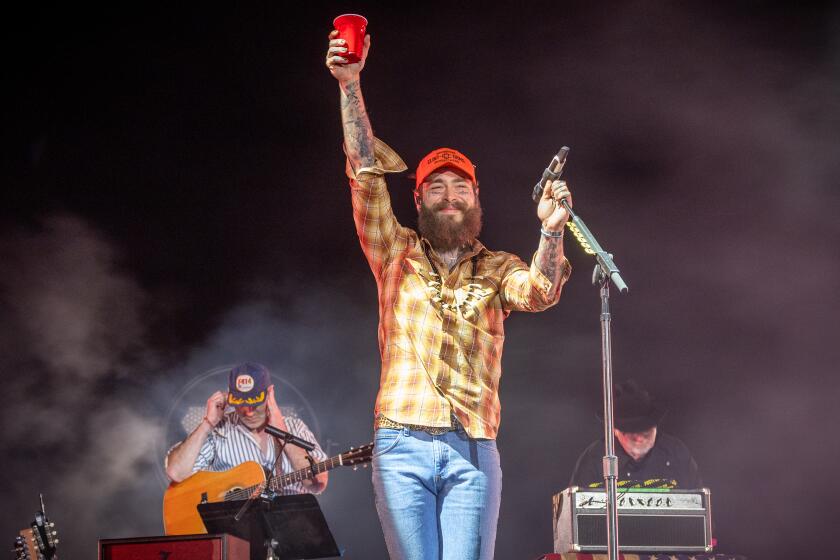Photos a Panorama of Sports History
The agony, ecstasy, joy and beauty of sports seem tailor-made for photography. The 73 images in a Smithsonian Institution traveling exhibition, “Athletes: Photographs 1860-1986,” at the San Diego Hall of Champions, through July 24, captures these and other aspects of sports.
Based on the 1987 book of the same title, the exhibit is largely swallowed up in the sprawling Hall of Champions in Balboa Park. Although an effort was made to exhibit the show with taste and decorum against the hall’s rear wall, the installation is cramped, and viewers must stoop for some photographs and stand on tiptoe to see others.
Even so, it’s worth the effort. The exhibit tracks the history of sports photography for almost 130 years, from the 19th-Century stop-action, sequential pictures of Eadweard Muybridge, to Bruce Weber’s 1984 Olympic portraits.
Photography and contemporary team sports have developed almost simultaneously. Louis J. M. Daguerre developed the first photograph, called a daguerreotype, in 1839. Abner Doubleday is often credited with “inventing” baseball the same year. Soon photographers were trying to stop movement with pictures of horses and athletes and before the end of the century, newspapers began adding sports pages with photos.
Curated by Ruth Silverman, the exhibit has its share of winning photographs: Richard Avedon’s New York street corner portrait of a willowy 16-year-old giant, palming a basketball. The kid’s name is Lew Alcindor--later Kareem Abdul-Jabbar. There’s the electricity of William Klein’s 1974 shot of Muhammad Ali, surrounded by fans after he regained the heavyweight title in Kinshasa, Zaire.
But there’s no apparent order--chronological or otherwise--to the installation. Because portraits aren’t grouped together, it’s possible to overlook Leon Borensztein’s devastatingly powerful image of a muscular “Young Athlete with Blind Baby.”
The subject matter ranges from various winter mountain sports, to polo, bowling, diving, and hunting. There’s a haunting portrait of Ernest Hemingway and his son Gregory, by Robert Capa, of the pair resting after a hunt, their shotguns leaning against a log. Hemingway was not an easy man to know, and you don’t sense any camaraderie between the two.
There are a several photographs from the 1930s and ‘40s by Lucien Aigner. Aigner captures the poetry of Sonja Henie’s “million-dollar legs” in a 1942 exposure of the three-time Olympic figure-skating champion.
Weber’s 1983 portrait of shirtless pentathlete Mike Storm is equally striking. Then there’s a 1976 classic body-building shot of Arnold Schwarzenegger, revealing truly awesome triceps. Ah well, something for everyone.
The show’s diversity in depth is its strength. A breathtaking 1887 portrait of a man leaping across a chasm is as strong as Jimmy Connors’ focused intensity caught by Klein, or the inscrutable humor of a 1961 image by an anonymous artist of Mao Tse-Tung playing Ping-Pong.
More to Read
The biggest entertainment stories
Get our big stories about Hollywood, film, television, music, arts, culture and more right in your inbox as soon as they publish.
You may occasionally receive promotional content from the Los Angeles Times.






